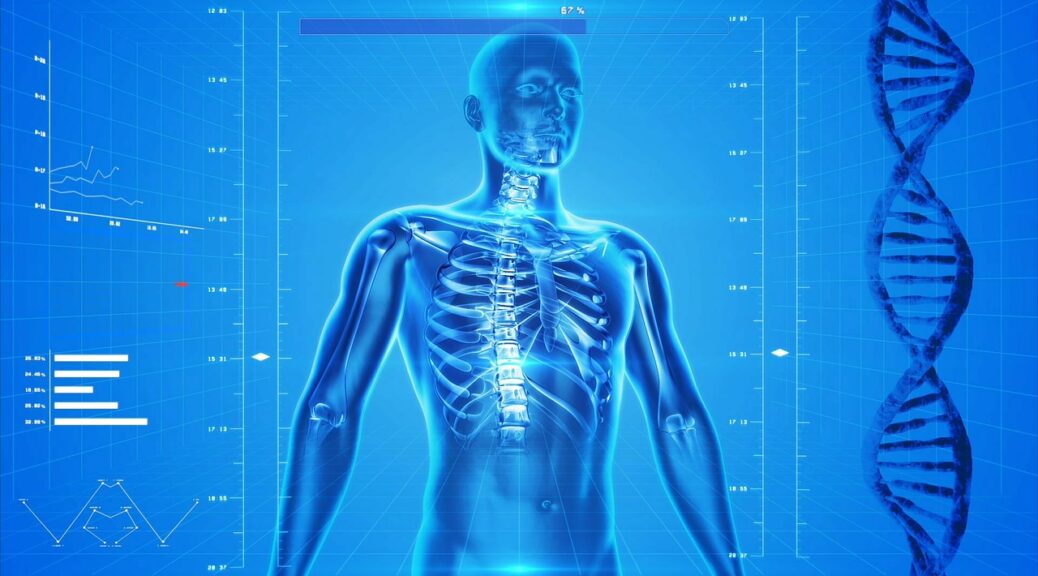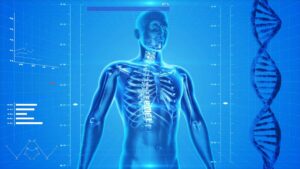I decided early on that aging was bad for you. It made people sick and then they died. It seems so simple and so true. Why do you think many people still don’t take seriously the idea that aging can and should be fought?
People are easily intimidated by scientific information. They get a lot of it, and most of it comes from people who think about aging in a way that appeals to fantasy and wishful thinking. Public figures who talk about aging usually make things up and make a big deal about it, without detailed evidence to back up their words. This makes intelligent people skeptical, and it’s harder for people who actually have information to rise above that in terms of clarity. Richard Miller, gerontologist. May 2022.
Theme of the month: Effects of aging on the bone system
Introduction
The bones forming the skeleton, especially the skull, are a symbol of death in many cultures. They are also the last parts of ourselves that will remain, in case of burial, for decades, centuries, millennia,… Finally, the degradation of our bones is also one of the many causes of mortality due to aging.
Definition
The bone system ensures the protection of the internal organs as well as their maintenance. It also serves as a lever for the muscles to allow numerous movements.
The human skeleton is composed of 206 bones in adult life. The skeletal system is made up of cartilage, joints and ligaments in addition to bones.
It represents on average 20% of the body mass. The bones are rigid, but the skeleton is very flexible.
Bone consists mainly of collagen fibers and an inorganic bone mineral in the form of small crystals and between 10% and 20% water.
Changes with age
The aging of the musculoskeletal system is important because it affects one of the major factors of functional independence. It represents 75% of the major health problems of people over 75 years old.
With age, the mineral density of the bones begins to decrease, this is called osteoporosis. The bones lose calcium and other minerals. This loss of bone density accelerates with age, especially in women after menopause.
The spine becomes shorter as the spinal discs gradually lose fluid and become thinner. It becomes curved and compressed.
The long bones of the arms and legs are more fragile due to mineral loss, but they do not change in length. This makes the arms and legs longer than the shortened trunk.
Moreover, as we age, the cartilage inside the joints and its components deteriorate, making them less resistant and more vulnerable to injury. The aging of articular cartilage is dependent on multiple morpho-genetic factors, but also on obesity and repeated microtrauma caused by work or sport. Unfortunately, articular cartilage does not regenerate and this is why prosthetic joint replacement surgery has become so common in both the hip and knee.
Aging also affects the muscles. There is a loss of muscle, called sarcopenia (subject of our monthly letter of January 2022). During this process, the mass of muscle tissue as well as the number and size of muscle fibers progressively decrease.
The effects of these changes
The bones become more fragile, smaller and more brittle.
Joint degradation can lead to inflammation, pain, stiffness and even deformity. Joint changes affect almost all older people.
The result of sarcopenia is a progressive loss of muscle mass and strength. Movement slows down and may become limited. This loss of muscle strength increases the strain on certain joints (such as the knees) and may predispose the person to arthritis or a fall.
Common conditions
Osteoporosis is a common problem, especially in older women. Bones break more easily. Compression fractures of the vertebrae can cause pain and reduced mobility.
Muscle weakness contributes to fatigue, lack of energy and reduced activity tolerance. Joint problems, ranging from mild stiffness to debilitating arthritis (osteoarthritis), are very common.
The risk of injury increases as changes in gait, instability and loss of balance can lead to falls. Falls often result in fractures and the likelihood of death in the elderly. Fracture of the femoral neck is particularly common as a cause of death.
Involuntary movements (muscle tremors and fine movements called fasciculations) are more common in older people. Older people who are not active may have abnormal sensations (paresthesias).
Solutions to prevent the consequences of bone aging
Physical exercise is one of the best solutions to slow down or prevent muscle, joint and bone problems. Exercise helps bones stay strong.
A balanced diet also plays an important role. Especially for women, who need to take special care to get enough calcium and vitamin D as they age.
Curative solutions
There are few new therapies aimed at increasing the longevity of the bone system. However, medical treatments do exist. They act on bone cells by stimulating their reconstruction by osteoblasts. An alternative could be the use of stem cells.
However, these issues are rarely addressed, even in the longevity community. We still have much room for research and rejuvenation in this area.
The good news of the month: Mammal death is a partially reversible phenomenon
Scientists at the German University of Bochum have found that blood markers of Alzheimer’s disease are visible up to 17 years before the onset of the disease. These are biomarkers of amyloid-beta protein indicating misfolding.
If this study is confirmed, it is doubly positive. It means that it is long. Window of opportunity to counteract what triggers the disease before it becomes disabling. It also confirms the traditional hypothesis of the origin of the disease.
In this case, it will of course remain to establish the therapy that will succeed in stopping the development of « harmful » proteins and, by a cascade reaction, stop the disease.
For more information


